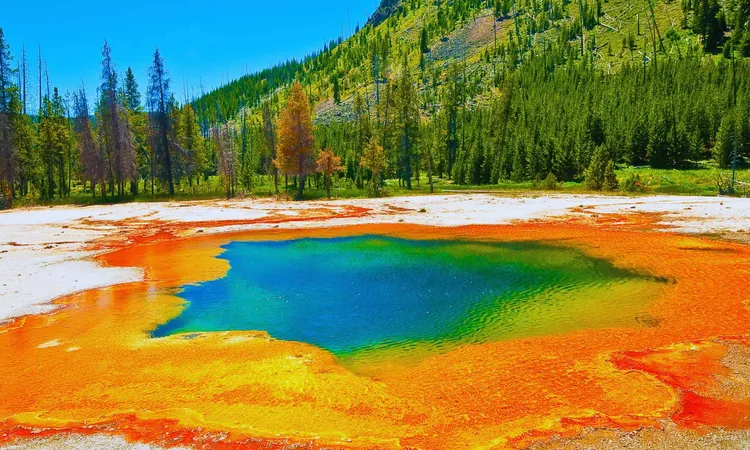
Unveiling Yellowstone's Hidden Magma Layer: The Key to Dormancy
2025-05-23
Author: Ying
A Geologic Marvel Beneath Yellowstone
Nestled in the heart of Yellowstone National Park, a groundbreaking discovery has revealed a secret that could be the reason the Yellowstone supervolcano remains dormant: a concealed magma layer situated about 2.4 miles beneath the surface, which scientists say plays a crucial role in regulating the volcano's activity.
The Mystery of Yellowstone's Supervolcano
For years, geologists have been captivated by the possibility of melting rock lurking beneath. In 2022, new findings hinted at an even greater volume of magma than previously estimated, raising eyebrows about the potential pressure brewing below.
High-Tech Imaging Reveals Surprising Insights
In an innovative seismic imaging campaign, researchers employed a massive 53,000-pound vibroseis truck to transmit low-frequency vibrations into the Earth. The reflections captured helped unveil enigmatic features deep underground that had never been studied before.
What Lies Beneath?
This hidden magma cap is not just a mass of molten rock; it consists of a unique blend of molten silicate, supercritical water, and rocks with gas-permitting openings. Supercritical water, heated beyond 700°F (371°C), transitions into a dense fluid, allowing gases to escape and preventing eruptions.
Keeping Eruptions at Bay
Yellowstone is renowned for its hydrothermal landscapes, which likely play a pivotal role in suppressing large volcanic eruptions. As researcher Brandon Schmandt points out, although a volatile-rich layer was found, its contents are not at levels typically linked with impending eruptions.
Navigating Yellowstone's Challenging Terrain
Capturing seismic data in Yellowstone is a formidable task due to the region's complex geology. Researchers had to overcome significant challenges, including noisy data and tough fieldwork conditions, often working under the cover of night to avoid disrupting park visitors.
Innovative Imaging Techniques Take Center Stage
To untangle the chaotic data, researcher Chenlong Duan developed a custom imaging technique, harnessing advanced wave-equation methods to clarify irregular signals. This innovative approach provided sharper visuals that standard methods couldn't achieve.
The Breathing Volcanic System
With an estimated porosity of 14%, the magma cap contains ample spaces filled with melt and supercritical water, facilitating gas flow and relieving pressure—a vital factor in preventing catastrophic eruptions.
Implications Beyond Yellowstone
Understanding the dynamics of Yellowstone's subsurface can significantly enhance volcanic hazard monitoring. Techniques unveiled here could be pioneering in tracking other active geological systems, offering invaluable insights into fluid movements in the Earth's crust.
What Lies Ahead? Future Research Directions
As researchers piece together the complex puzzle of Yellowstone’s volcano, future work will focus on refined modeling and advanced seismic methods. The goal is to gain clearer insights into structures that help contain magma in other volcanic regions.
This pivotal study sheds light on Yellowstone, providing a practical framework for innovative research in carbon capture and geothermal energy, proving that this iconic park is also a real-world laboratory for scientific exploration.
 Brasil (PT)
Brasil (PT)
 Canada (EN)
Canada (EN)
 Chile (ES)
Chile (ES)
 Česko (CS)
Česko (CS)
 대한민국 (KO)
대한민국 (KO)
 España (ES)
España (ES)
 France (FR)
France (FR)
 Hong Kong (EN)
Hong Kong (EN)
 Italia (IT)
Italia (IT)
 日本 (JA)
日本 (JA)
 Magyarország (HU)
Magyarország (HU)
 Norge (NO)
Norge (NO)
 Polska (PL)
Polska (PL)
 Schweiz (DE)
Schweiz (DE)
 Singapore (EN)
Singapore (EN)
 Sverige (SV)
Sverige (SV)
 Suomi (FI)
Suomi (FI)
 Türkiye (TR)
Türkiye (TR)
 الإمارات العربية المتحدة (AR)
الإمارات العربية المتحدة (AR)